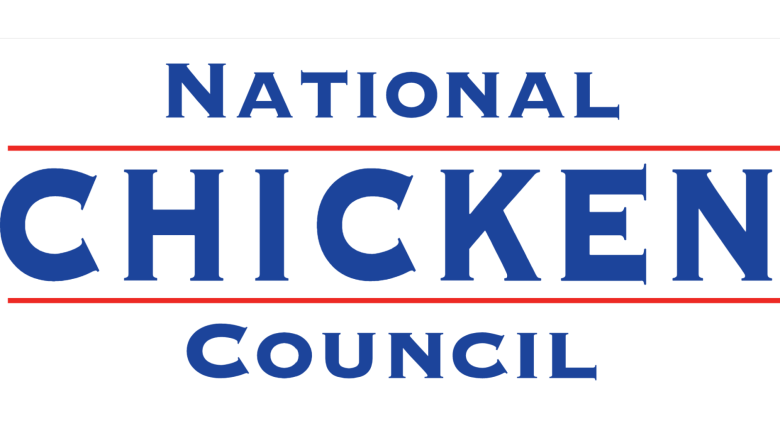NCC releases opinion column
NCC president shows concern over USDA's stances on chicken.

Courtesy of the National Chicken Council
The following column appeared on May 19, 2023, in The Hill. The original post is available here.
Solutions in search of problems — USDA’s unnecessary intrusion into chicken industry
America loves chicken. It’s healthy, delicious, sustainable and — for the moment — the most affordable protein in the meat case. The U.S. chicken industry supports millions of good paying jobs in hundreds of rural communities.
Unfortunately, some in Washington — and their allies in the trial bar and activist boardrooms — want to make chicken less affordable. Why? A small, but vocal minority of radical activists are persistently advocating for the end of animal agriculture, even though most Americans depend on chicken as an affordable source of nutrition.
New data shows that grocery prices increased 11% between 2022 and 2023. Making chicken — a protein staple on which families of all income levels rely — more expensive and less available makes no sense. Sadly, for the American consumer, that is exactly what’s being proposed. And those most vulnerable would be first in line: lower income earners, children who receive free and reduced-cost school meals, and individuals who rely on food banks to feed their families. There has never been a worse time for needless governmental regulation.
One example: To be sure, Salmonella is a potentially dangerous foodborne bacteria. It occurs naturally in chickens. That’s why we stress the need to always cook chicken to an internal temperature of 165 degrees Fahrenheit and to avoid cross-contamination in the kitchen. When those steps are followed, there is absolutely no danger of foodborne illness from chicken.
Chicken producers work continuously and closely with the United States Department of Agriculture (USDA) to reduce the presence of Salmonella in and on chicken. The industry has implemented new controls and interventions and supported modernized poultry inspection. As a result, we are meeting and exceeding USDA’s rigorous food safety standards.
If chicken is safer now than it’s ever been, why do some want to abandon this approach and potentially require millions of pounds of chicken to be sent to landfills rather than dinner tables? Salmonella is not an 'adulterant' in chicken, as potential new USDA guidelines suggest. It is not 'added' to chicken. It occurs naturally and, through strict protocols and testing procedures, can be minimized. And Salmonella is completely destroyed when chicken is properly handled and cooked.
The Biden administration is fond of reminding all of us to “follow the science.” It’s an ironic sentiment given that we have yet to see any science underlying these proposals.
A second example of unnecessary intrusion by the USDA focuses on the way chicken growers are compensated. We use what might be called a “pay for performance” system — under which farmers are financially incentivized to raise healthier birds. High-performing farmers are paid better than others.
Under this system, contract farmers are guaranteed a pre-arranged base pay for the chickens they raise. In addition, farmers earn bonuses based on the weight and performance of their flocks. Some companies also offer bonuses to help cover the costs of utilizing the latest on-farm technology.
In addition to base pay rates and bonuses, growers in this model do not take on most of the risks associated with chicken production, like hedging grain markets or finding and maintaining customers such as restaurants and grocery stores. Contract chicken farmers are protected from the greatest economic risks, have a predictable market, and earn a good living.
Surveys show the current system works for everyone: farmers, chicken companies, the birds themselves, and ultimately, the American consumer.
Despite the success of this model, the USDA has revived an Obama-era approach to turn this well-functioning system on its head. Their proposals would dramatically increase costs and risks associated with contract chicken farming at a time of record inflation. And, in the name of “transparency” and “fostering competition,” the USDA would make it difficult to reward the most efficient and effective growers. That is tragically un-American.
And there’s more.
Back when Bill Clinton was president, the USDA began allowing chicken processors to run certain parts of their plants at higher line speeds. It may be the most well-studied pilot program in the history of the federal government. Now, the USDA is suggesting it might abandon this 25-year-old program and put America even further behind our global competitors. Chicken companies in Canada, Europe, South America, and Asia operate the same exact equipment at up to 30% higher line speeds than we do, and without food safety or worker safety issues.
The department appears to be listening to those who suggest faster line speeds are dangerous to workers. The data says otherwise. Since the program was started in the 1990s, the U.S. chicken industry has made tremendous strides in technology. The area of a processing facility where these faster line speeds are permitted is almost completely automated. Over the last 30 years, the total recordable poultry processing illness and injury rate decreased 73% — a decrease in injury rates that coincided with a period of substantial increases in line speeds, bird size, and automation.
It may be that well-intentioned regulators are misinformed. If so, we stand ready to work every day to address their concerns about Salmonella, fairness in chicken contracting, line speeds and other issues. Or those same regulators might be listening to those groups who will use whatever means necessary to make chickens more expensive to grow and process — and far more expensive to eat — to serve their own agendas.
America loves chicken. It’s a healthy, economical and versatile source of protein that sustains our country and is arguably the most important food in the world. Let’s keep safe, affordable chicken on our plates. Chicken works for America.
Source: NCC (column by Mike Brown, opinion contributor)
Mike Brown is president of the National Chicken Council in Washington, D.C.
Looking for a reprint of this article?
From high-res PDFs to custom plaques, order your copy today!






